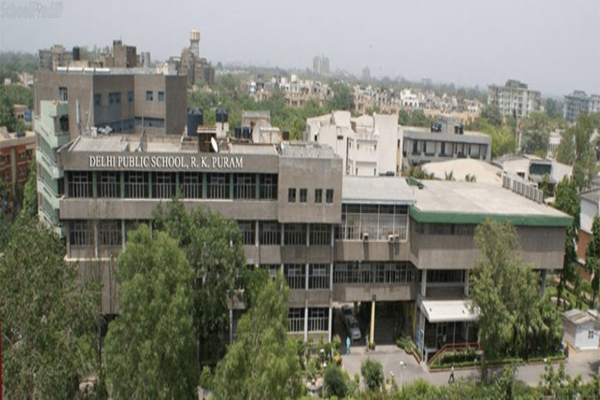ICSI plans to offer online CS course in India
US commits $100m to promote education in Pakistan
< ?xml:namespace prefix = st1 ns = "urn:schemas-microsoft-com:office:smarttags" />
US committed to give another $100 million to
Content learning programme in classroom
< ?xml:namespace prefix = o ns = "urn:schemas-microsoft-com:office:office" />
The National Centre for Technology in Education (NCTE) is initiating way for digital content for school broadband project.
NCTE is calling for multiple content suppliers to deliver digital versions of traditional reference materials like dictionaries, atlases and encyclopedias, as well as multimedia software, which uses video and audio to enhance the learning experience. Department of Education and Science has developed the Scoilnet for both primary and secondary schools to make central portal for online. Skool.ie and TeachNet.ie are two other Irish learning sites, which are very popular among classroom and teachers. The NCTE is also participating in a new EU-funded project on sharing educational content. EU has launched Metadata Ecology Learning and Teaching (MELT), a search interface for repositories of educational data. The project involves 12 Education Ministries, relevant regional bodies as well as commercial and non-profit developers of learning content. The aim of the project is to bring critical mass of educational materials, which would be tagged and made free for teachers and students of European schools.
Uganda Telecom uses 800 computers for ICT projects
Uganda Telecom and Stem Computing International have opened computer literacy for educational institutions in < ?xml:namespace prefix = st1 ns = "urn:schemas-microsoft-com:office:smarttags" />
Stem Computing International is establishing computer laboratories for secondary, tertiary and higher learning institutions. Stem is planning to roll out another 2000 computer laboratory across the country by 2011 under ICT firm's work plan. Stem is planning to upgrade the blue IBM compatible computers and run more programmmes rather than basic windows home edition programmes. Stem is planning to establish 32 such laboratories in the four regions of the country. According to Steven Matsiko, the managing director at Stem, the cost of constructing a laboratories averages between Ush26 million ($14,054) to Ush55 million ($29,729) depending on factors like: design and size.
e-Learning campaign for Kerala prisoners
Now, Kerala's e-Learning initiative, Akshaya has been introduced in prisons of Kerala, (India).
< ?xml:namespace prefix = st1 ns = "urn:schemas-microsoft-com:office:smarttags" />
The Chief Minister of Kerala, V.S. Achuthanandan has inaugurated the e-Literacy campaign for prisoners at the Kannur Central Prison. The prison has about 1350 inmates. Currently, the project is in operation at the eight districts of the state. The Akshaya centres will provide IT training to one member in every household at a cost of INR120. A 15-hour lessons in computer basics would be given to each person.
Moving with a SMART Approach to Technology
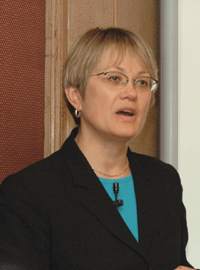 Nancy Knowlton is responsible for the day-to-day direction of SMART. Recognised as one of Canada’s top businesswomen, Nancy was the 1999 Canadian Woman Entrepreneur of the Year in the Export category, awarded by the Joseph L. Rotman School of Management at the University of Toronto and the Bank of Montreal. She and SMART co-founder David Martin were awarded the 1999 Prairies Region Technology Entrepreneur of the Year Award, sponsored by Ernst and Young, and a Manning Innovation Award in 2002.
Nancy Knowlton is responsible for the day-to-day direction of SMART. Recognised as one of Canada’s top businesswomen, Nancy was the 1999 Canadian Woman Entrepreneur of the Year in the Export category, awarded by the Joseph L. Rotman School of Management at the University of Toronto and the Bank of Montreal. She and SMART co-founder David Martin were awarded the 1999 Prairies Region Technology Entrepreneur of the Year Award, sponsored by Ernst and Young, and a Manning Innovation Award in 2002.
Why did SMART choose to work in education?
We have to be fair and say that education chose our product. We were showing our new products at several trade shows and it soon became apparent to us that the people who really got it, who could see the need for the product, were all from education. Several educators went on at some length to tell us how they could use our product, and it was that clarity of thinking that caused us to orient our plan to engage more systematically with educators at all levels. Of course, there was very little money in education at that time for technology, but that didn’t discourage us. The people who really saw the benefit of our product somehow found the money and became rabid fans.
Will SMART always focus on the urban sector in education?
We don’t think that we focus on the urban sector of education now. We want our products to be equally relevant to children in all locations. My husband and I both come from modest backgrounds. In fact, I grew up on a farm. We believe in the equal opportunity that education can provide because of our personal experiences. Perhaps we have to do more for a rural education product, but we will keep at the issue until we get it right.
How did you succeed in establishing a place for SMART in this global niche market of e-Learning? What has been your forte in this sector?
We have established SMART one customer at a time. We have become insiders by listening and delivering products of value to our customers. We have focussed on our customers and their needs and desires and not a sense of corporate importance, as we have grown larger. We have done many things right, because we are always trying to think about the customer. We do not follow fads and trends in business. Back in the dot.com era we didn’t focus on “eyeballs” and “burn rates” even though everyone was saying that this was the new way of doing business. We thought for ourselves and decided to run a business that was solid and here for the long run. Jim Collins refers to this approach in his book “Built to Last” and we still believe that this is the right.
way to run a business. How do you see the global market for e-learning?
Which sector of the market (K-12, higher education, corporate learning, etc.) you think will see the maximum growth in the next few years? The global market for e-learning is exploding. People everywhere see the opportunity that technology tools can provide to really engage children in a way that pen and paper never could. Whether it is a teacher shortage in certain subjects (such as maths and science) or a classroom teacher looking for novel ways to explain everyday topics, technology is being used the world over to effect change. I don’t think that it is a case of saying that K-12 will grow faster than higher education. There are different ways of using technology in the various levels of education. What I have seen, and what frankly excites me the most, is the great opportunity that education presents to allow people who have been on the outside looking in as the world has moved into the 21 st century to fully participate in the global economy. There are young children literally on every corner of the earth who have the brainpower, and maybe more importantly, the desire to be something special. Adding these children to the world’s workforce with all of the energy and creativity that encompasses is what will be the biggest boost to the world. What are the potentials for SMART’s products for developing countries market, especially in rural areas? The best things that SMART products can do are really threefold: • They can provide access to engaging learning experiences for children regardless of their location and the quality of the teachers in the local communities. With digital content accessible to all, there is no reason that these rural children cannot succeed to the same degree at their peers who live in urban areas. • They can make children confident. Children can recognize that they can learn and that develops a sense of pride and self-worth. A lot can be accomplished when these two elements are in place. • They can open the door to a world that many rural children have never imagined. These children can visit a zoo, see a man land on the moon and understand how waves work – and all this before lunch time. The world is open to them like it has never been before. We think that our products should be in all classrooms around the world.
What has been SMART’s experience in working with governments across the world?
Do you believe a high-end product like smartboards can become a viable option for the rural areas in developing countries? Governments around the world have been very open to working with SMART Technologies Inc. They know that we have a product to offer, but they also can tell that we are not here to sell them on products that won’t meet their needs. We have sold substantial numbers of our products to: • Mexico through the Enciclomedia project. This project is changing the educational experience in Mexican classrooms and engaging students in rich multimedia experiences. The teachers are feeling comfortable with the way in which technology is being brought into their classrooms. • The UK through the BECTA project for interactive whiteboards. This GBP50 million initiative drove adoption of technology to a critical mass. The momentum has continued and there are exciting pockets of innovation beyond the interactive whiteboard as well. It is clear that governments are looking at the opportunity that technology can provide. There are demands for lower process throughout the world. Volume drives a lot of efficiencies for with our hardware product, so we can meet the financial needs of our customers. Our customers also appreciate the superior quality of our product and know that this has to be factored in to total cost of ownership considerations. As the Co-CEO, where do you see
SMART five years from now?
We want to fulfill our dream which is to change the way that the world works and learns. Our products will be in classrooms literally around the world. We will have our SMART Board interactive whiteboards in many, many more classrooms. We may reach a billion dollars of annual revenue but we’ll still be hard at work for our customers .
Improving Learning Levels Qualitatively
Himachal Pradesh, once considered as a backward state in North India, has already achieved near universal enrolment up-to the elementary level in the State, which is the first and foremost goal of Sarv Shiksha Abhiyan and has been able to bring down the drop out rate below 1.5 percent. Various programmes under universalisation of education are being implemented to achieve the objective. An ambitious INR 5320 million Sarva Shiksha Abhiyan is being implemented in the Sate for improving the performance of school system and provide community owned quality elementary education in the mission mode.
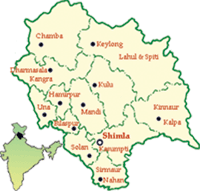 Computer literacy programme has been started in 282 schools of the State. Not only the children are being given elementary knowledge of computers in the programme but the teaching of mainstream subject through computers has also been undertaken. The teachers are being provided training for the purpose. Science Labs are being set up at selected cluster levels.
Computer literacy programme has been started in 282 schools of the State. Not only the children are being given elementary knowledge of computers in the programme but the teaching of mainstream subject through computers has also been undertaken. The teachers are being provided training for the purpose. Science Labs are being set up at selected cluster levels.
Himachal is the only state in the country to spend INR 1.03 per capita on education, against Kerala’s 68 paise and neighbouring Punjab’s 58 paise. Significantly, its per capita expenditure on education is almost
Interview: Focus Need to Shift from Excess to Quality
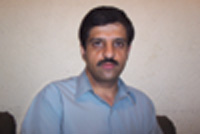
 What are the major interventions under the SSA project in the state so far?
What are the major interventions under the SSA project in the state so far?
Under SSA we have been working under the mission statement that all children should come to school; there should be no gender gap; children with special needs should be covered, and they are brought into mainstream of education as far as possible. We have achieved a mark for out of school children in the state at just 0.5% of the total children in this age group and the drop out rates are just 15 among both boys and girls at primary level and 2-3% at upper primary level. The only concern we have is that the learning level should be improved.
What are the strategies you follow for teachers’- training? 
First is, there is compulsory training for every teacher for a period of 10 days. Now the question is on the effectiveness of the training. For that we try getting the needs assessed by the teachers and through the teachers right from school level. After scientifically identifying their problems and issues that needs to be addressed through training and the competencies (that need to be developed), those are discussed at various levels in the state. By doing this we come to a position to form a view as to on which areas we should be focusing on. It’s a continuous process, and always keeps on changing. Through that we develop various modules, which are shared by teachers, piloted, and also tested. There is always scope of change and improvement by this.
Do you get any kind of support from Panchayati Raj Institutions in terms of their participation? 
In Himachal, their participation in education is quite good. People are coming forward; they are concerned about the education of their children. That is why we have so little gap in gender, and invisible drop out rate. It is all because of peoples participation. The local bodies have been involved in the implementation process. Public participation has been just great in some districts. People have even been contributing in terms of money, time, and their sources to boost education initiatives in the primary as well as upper primary level.
What is the level of integration of information and communication technologies in school education under SSA? 
It is an integral part of education in our state. We don’t see it as a separate entity or intervention. Various interventions have been planned and implemented under ICT to have it integrated in mainstream education. We have computer education in 280 schools, out of nearly 4000 schools in the state. At the secondary level, we have computer education in all the schools. At primary level we do not have computers though, but we want to focus the upper primary level first. For that we are entering into a MoU with Azim Premji Foundation which is already been done. We are talking to Intel for teacher training programme and orientation. In addition, we are partnering to various government, semi-government, and private organisations to develop various tools, so that we will be in a position to take care of this area.
What are the challenges you come across at all levels of planning and implementing the education programme? 
Motivation and participation at community level is the biggest challenge.
Second, the focus now has to shift from excess enrollment retention to quality in learning levels. We in our state have already addressed the excess part, and enrollment part. We have primary schools within every 1- 1.5 km radius. We have a sizeable number of children who are disabled and out of mainstream education system. Though the number is not high, but as a percentage of population, Himachal has a higher disabled population than the national average. We have nearly 2200 children in the focus group (6-14 years).
The other challenge is with a very hard group of children like the migrant labour, very poor and marginalised or scattered in small habitations, who are not going to schools. Last year we had 4301 children who are out of school in the focus group. This year we have 5000 such children who migrate and so remain out of school. So we have a mobile school for them, which keeps on moving. We are also working out other strategies to handle this small but difficult group. twice the national average. The teacher-child ratio is also higher, about twice as high in HP compared to India as a whole. For the year 2006- 07, the Government of India has earmarked INR 91 crore as its share for Sarva Shiksha Abhiyan in Himachal Pradesh.
On Digital Learning magazine-
We have been getting this magazine regularly. This gives us updates on SSA, about school insides. They tell us what is happening inside and outside the country, the various ICT initiatives. We keep on reading those and discuss about what we can implement. In government sector, we have nearly 11,000 primary schools and 4000 upper primary schools. For us this is even quite a high number. Nearly 10 Lakh students are ruled in the schools. Anything to be ruled at the state level requires lot of fund. That is the main constraint. But still, the ray of hope comes from ideas like distance education, e-learning or e-education. These are the areas, which are quite important for us, and we are getting regular inputs on such things through this magazine.
The State Government has introduced IT education in most of the senior secondary schools in the State. The subject of IT education is introduced as an additional optional subject to the students of class IX to Class XII of these schools from the academic year 2001-02. Reputed private training institutions impart the education. Hundreds of middle, high and senior secondary schools have already been computerised and computer aided learning is being provided besides imparting basic skills in operating computers.
News Asia
Malaysia and India to initiate regional IPR institute
Malaysia and India will initiate the establishment of an India-Asean Institute for Intellectual Property Rights to build human resource capacities and training to serve the region.
The regional institute would also help protect IPR of products produced by both regions, said the Minister of Science, Innovation and Technology, Datuk Seri Dr Jamaludin Jarjis.
This was agreed to at the bilateral meeting between Malaysia and India on Science & Technology (S&T) Cooperation and now it is at the midst of discussions for the mechanism to set up the institute which will be located in Malaysia. Both countries have also agreed to pursue the idea of harmonising the regulatory framework for Biopharmaceutical sector in the East Asia region. In the field of research & development (R&D), India and Malaysia have agreed to undertake collaborative R&D on a sharing basis in three areas – Biotechnology, Information Technology and Space Technology.
More schools getting Smart with ICT
Seven years after the Education Ministry in Malaysia introduced the Smart School computer programme project at 88 schools, a total of 4,495 more are now equipped with computer labs, in line with the ministry's Making Schools Smart programme.
 An evolution of the pilot smart school project, the Making Schools Smart programme is built on the various ICT initiatives from the smart school project to educational television broadcast service. Early this year, 10 pilot schools in the Kalabakan area of Sabah were equipped with Internetready “Access Centres.” to give students and teachers more ICT exposure. The success of this programme has led to the setting up of Access Centres in 74 other primary and secondary schools in the rural areas of Sabah and Johor. The Access Centres are similar to cybercafes but they focus on learning and enabling students to work on their assignments. This is different from the existing computer labs, which are used to conduct lessons for certain subjects and will be housed in a separate room.
An evolution of the pilot smart school project, the Making Schools Smart programme is built on the various ICT initiatives from the smart school project to educational television broadcast service. Early this year, 10 pilot schools in the Kalabakan area of Sabah were equipped with Internetready “Access Centres.” to give students and teachers more ICT exposure. The success of this programme has led to the setting up of Access Centres in 74 other primary and secondary schools in the rural areas of Sabah and Johor. The Access Centres are similar to cybercafes but they focus on learning and enabling students to work on their assignments. This is different from the existing computer labs, which are used to conduct lessons for certain subjects and will be housed in a separate room.
Recently, Education Minister Datuk Seri Hishammuddin Tun Hussein announced that up to 1,500 schools will be equipped with the Access Centres receiving 15,000 personal computers, 1,500 printers as well as the necessary furniture. Next year, another 1,290 schools will receive 10 computers each.
Malaysian state to provide free surfing in all big towns
Free wireless broadband Internet service will be provided in all major towns in Perak by April next year, according to Malaysian Menteri Besar Datuk Seri Tajol Rosli Ghazali. He said the service would be available at all 15 district council areas in Perak. Ipoh is the first town in the country to offer such a facility which is available at the three rest and recreation areas along the North-South Highway in Perak since last March. The facility will be provided in stages. He said the state government allocated RM20 million ($8.7 million) annually for the development of information and communication technology (ICT) of which RM19 million was for infrastructure cost and the remaining for training.
Alliance to Promote ICT Education
Raman International Institute of Information Technology (RiiiT), an ICT solution provider for the education sector, has announced its tie-up with the Cambridge University Press for promoting ICT education for the K-12 segment catering to the entire South Asian market.
RiiiT has conceptualised an innovative end-to-end curriculum for ICT Education for K-12, named “IT Kids”. “IT Kids” is a special package of teaching material, to assist students and teachers in honing ICT Skills. In stage 1, the child and teacher are supported with conventional books; in stage 2, digital aid is provided, wherein the teacher is supported with classroom presentation, workshops/seminars, orientation programs, session plans; in stage 3, computers-based tutorial and online crossword puzzles, quizzes, memory games, animations, etc are provided. Whereas in stage 4, e-learning content is provided more through images, audio, simulation, and multimedia.
 development. AIT is also working with around 300 regional universities to develop a shared open source computer science curriculum similar to MIT's Open Courseware project. One full time researcher and 14 research students will receiving funding and start work on developing Linux on the desktop come Chinese New Year 2007.</p>
<p><strong>Philippine gov't to invest in BPO projects</strong></p>
<p>The Philippine government is allotting a total of some P26 billion (US$526 million) on projects that support its Cyber Corridor program, which seeks to attract investments in the field of IT and business process outsourcing.</p>
<p>The Commission on Information and Communication Technology (ICT) announced several projects under its Medium-Term Public Investment Program (MTPIP). Under the MTPIP agenda, P5.1 billion is intended for the government broadband network; P11.1 billion on ICT education and distance learning; P3.5 billion for Public Access and Postal Programme; P3 billion for disaster prevention and preparedness; P4 billion for government mass media and broadcast services; and P221 million for technical assistance projects.</p>
<p>In order to produce graduates for the knowledge economy, the Cyber Corridor would focus on the implementation of the National English Proficiency Programme being conducted by both the Department of Education (DepEd) and Commission on Higher Education (CHED); the Distance Learning Program, also by DepEd; and Training for Work Scholarship Project to be implemented by the Technical Education and Skills Development Authority (TESDA).</p>
<p><strong>Internet users in Myanmar number nearly 300,000</strong></p>
<p>The number of Internet users in Myanmar has reached nearly 300,000, up from merely 12 four years ago, according to newly disclosed figures of the telecommunications authorities.</p>
<p>According to the Ministry of Communications, Posts and Telegraphs, although the telephone wire capacity has been upgraded to 12 megabytes (MB) per second from 2 MB previously, the <!--Ads3-->Internet lines are still so congested that arrangements are to be made to upgrade the capacity further to 45 MB in the future.</p>
<p>To improve the country's Internet access, the authorities are also extending connections of Asymmetric Digital Subscriber Line ( ADSL) to every township, setting the target to be met by the end of this year.</p>
<p>The country introduced e-education system in early 2001 with one ICT park (now known as Info-Tech) in Yangon and another ICT park (now</p>
<div class=)


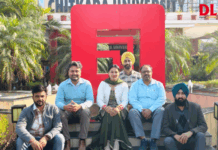




 at the Malta Council for Arts, Science and Technology (MCAST) since they applied in September.</p>
<p>The number of eligible students who applied for ICT courses in September exceeded the 600 tally, and is more or less equivalent to the total number of students to apply for such courses during the past four years. The government has signed definite contracts with private ICT training centres for students to be trained under the supervision of MCAST. All eligible students who could not be accepted in September will now be accepted.</p>
<p>The training providers will be following the same curriculum used for ICT courses at MCAST, and students will enjoy the same benefits as those following courses at the college. Moreover, the government will be paying all the expenses for the ICT courses offered to these students by the training providers and the students will be able to make use of the MCAST library and other facilities.</p>
<p><strong>Education ministry in workforce development</strong></p>
<p>The education ministry in Uganda has introduced a new low-cost ICT-based learning to equip the workforce with development skills.</p>
<p>The e-learning training programme has already been launched in Jinja. The courses provide skills to enable trainees access the vastly-expanding technology employment opportunities especially in out-sourcing and call centres.</p>
<p><strong>E-learning helps to save animals</strong></p>
<p>Hundreds of thousands of animals are saved each year from use in education thanks to computer simulations created by Professor of e-learning at Edinburgh University, David Dewhurst. The development of his software programmes has been funded by the Lord Dowding Fund for the past 20 years as his computer programmes replace the use of animals in university science teaching.</p>
<p>Professor Dewhurst said – LDF is currently helping us develop programmes to enable teachers all over the world to design their own courses using our online tools. The LDF grant is enabling us to produce <!--Ad2-->different language programs and upgrade existing tools. In addition, LDF is funding the promotion of the simulations to spread the word.</p>
<p><strong>KIE launches EdQual ICT for basic education</strong></p>
<p>Kigali Insititute of Education (KIE) in Rwanda has launched a new research programme for implementing good quality of education in the country.</p>
<p>The research programme named EdQual ICT will especially use for basic education of Science and Mathematics. About 200 educators will discuss the use of ICT in the teaching of Science and Mathematics. The programme is facilitated by four professors of UK, Chile, South Africa and Rwanda. This is first kind of education programme in Rwanda with the use of ICT. The purpose of Edqual is to generate and promote new knowledge, which will improve education quality for the poorest people in the world and raise gender equity. The five-year research programme is aimed for designing initiatives, which can be implemented realistically a large scale in sub- Saharan Africa and other low developed countries.</p>
<p><strong>Secondary schools of Uganda will get computer labs</strong></p>
<p>Now, the majority of secondary schools in Uganda would be equipped with computer laboratories.</p>
<p>The ICT state minister Alintuma Nsambu announced this plan at the Media Node ICT journalists’ workshop. According to him, these laboratories would encourage ICT programmes. About 54 schools were already equipped with computer laboratories. It is expected the scheme will take place by next year.</p>
<p><strong>MPs accuse government agency in UK for restricting open source in schools</strong></p>
<p>Nineteen MPs, led by a former teacher, are backing a parliamentary motion which claims that BECTA, the government’s advisors on the use of ICT in education, is using outdated frameworks which exclude suppliers of open source software.</p>
<p>Schools are advised that they should purchase all ICT products and services through a BECTA framework. The MPs claim that these frameworks are biased in favour of large software suppliers and discriminates against smaller software suppliers, such as open source developers.</p>
<p>BECTA and the DFES say they strongly rejected the claims of the MPs. They say the issue of open source was one of “measured inclusion, rather than blanket exclusion”. </p>
<div class=)










